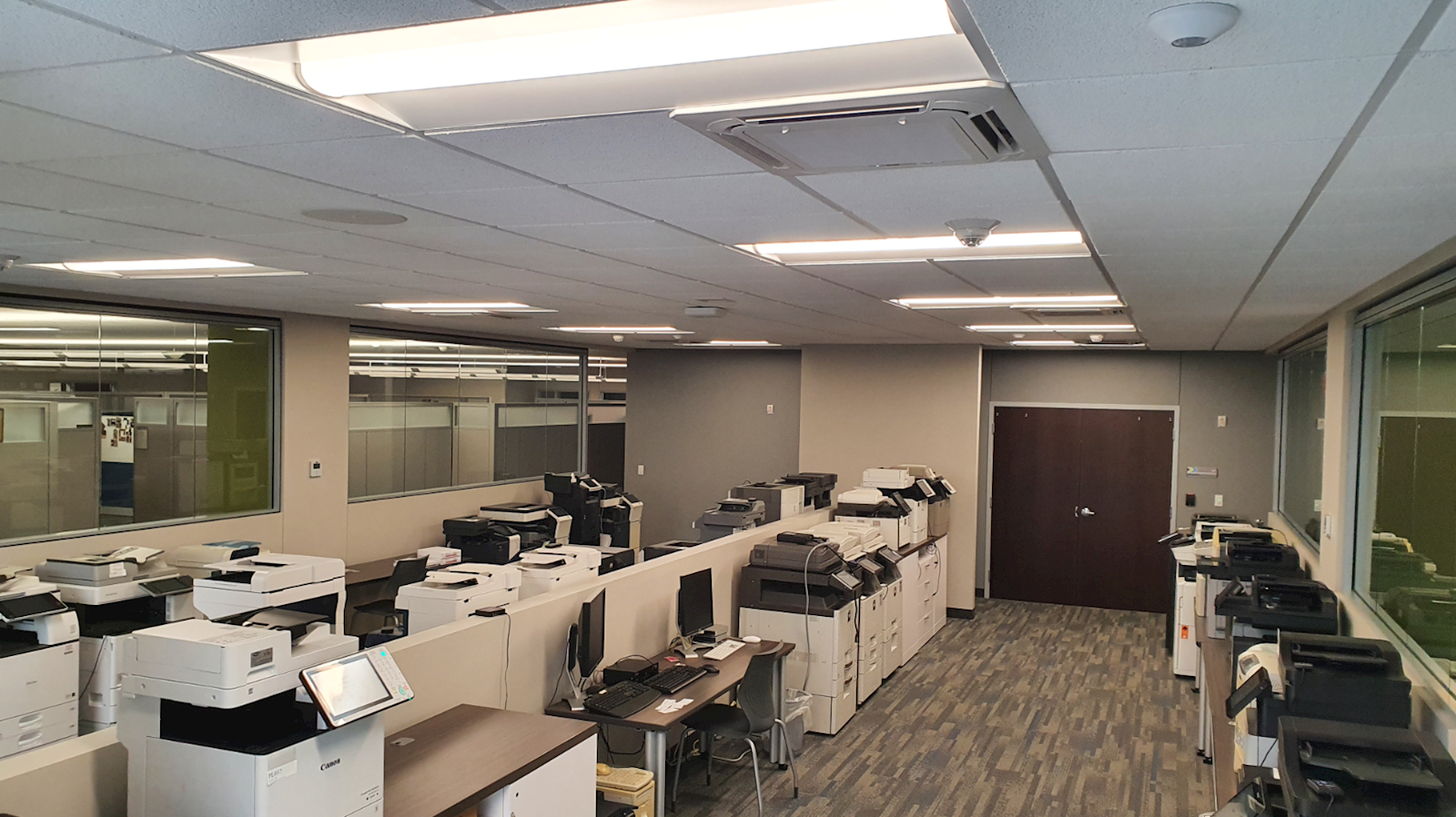Like many workers around the world, I spent several months in this pandemic year working from an improvised workspace at home. Along with the change of work locations, I also gained a whole new set of co-workers — three teenagers, a spouse, and a lazy terrier — as well as a number of new job titles. Network engineer. First-level support desk. Second-level support desk. Business Analyst. Chief Security Officer. You get the idea.
Of all the roles I played during this time, my least favorite was that of IT Procurement Manager. Especially when it came to printing. I had been spoiled by working in a corporate office environment where printing “happens automagically” and a trusty staff of co-workers ensures printer trays are never empty and toner cartridges never run out. As such, I had little appreciation for the time and money it takes to maintain a busy print environment. Soon, I was on a first-name basis with the curbside pickup team at our local office supply store. “Why not pick up a multi-pack of black XL cartridges while you’re here, Mark? Could save you a trip next week.”
Until I started paying for a whole team of print users out of my own pocket, I did not truly appreciate the sheer volume of pages that were printed unnecessarily. Draft documents printed in color instead of black & white. Long spreadsheets printed on one side of the page instead of both. A ten-page lab report with a typo on the first page sitting in an output tray underneath a virtually identical ten-page report sans erreur.
Once I re-joined my LRS colleagues at my regular office, I realized why these print problems at home were not common at work: pull printing. As early adopters of pull print solutions and secure printing software, the LRS IT staff has made very few single-function output devices available for general use. Workgroup printers are the norm, enabling our IT department to control print volumes and track consumable use. Documents sent to a pull print queue are not printed automatically but only upon user authentication at the device. Whenever I need to retrieve a print job, I just tap the same round fob on the printer that I use to enter the building each morning.

Choices, choices…
LRS’ internal technical staff is far better at keeping our printer fleet up and running than the IT brain trust at my home office. But sometimes even devices in the corporate environment run out of paper or toner. In this unlikely event, I can simply walk up to any other nearby MFP, tap my fob on the badge reader, and voila — documents on demand.
Like my recent teenage work-from-home colleagues, I sometimes mess up and print something that contains an error or print a draft document in color that really didn’t need to be. Using the MFP touch panel, I can cancel print jobs like these before wasting paper, toner, or time. Each user has the ability to help the organization control printing costs by reducing or eliminating unnecessary print jobs. And now that I better appreciate how small costs add up, I am happy to do my part.
For a variety of reasons, I hope that it will not be necessary to reprise my role as IT administrator at my home office any time soon. But if I do, I may look into implementing pull print in our home environment as well. Or find some way to deduct the cost of print consumables from my kids’ allowances.